An early 16th century German Schaube (coat), worn by middle and upper class men – and occasionally by upper class women.
With my decision to make a full German wardrobe, I needed a German replacement for the ubiquitous cloak I had used for several years. I liked the look of the Schaube and started searching to see if it was also worn by women.
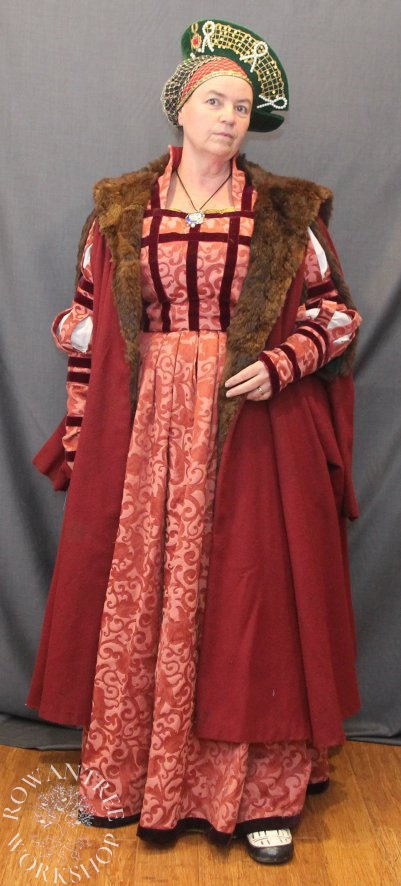
Research and Design
I first met the Schaube in the A History of Costume (Köhler 1963), where it was described as being part of German men’s dress from the first half of the 16th century.
Going through the images in Friedländer & Rosenberg’s encyclopaedic work on Lucas Cranach (1978), I was delighted to find several examples of women wearing the Schaube – clearly made to the same design as those worn by the men. These examples were all worn by women in noble dress.

Source: Köhler (1963)

Source: Wikimedia

I had bought a second-hand mink coat in a charity shop, which would be ideal for the collar, and I had some red wool/polyester mix twill in a suitable weight (real wool was hard to come by). And I had a couple of weeks before the next big camping event…
Construction
First step was making the pattern, based on the first of Köhler’s two drawings. I had real problems understanding how it worked, so I made a paper model of his design and stuck it together. At this point I realised a) it was meant to be a full circle; b) this drawing was the front and back patterns overlayed; c) he had not drawn the collar pattern; and d) his sleeve would not fit unless heavily gathered into the armscye.
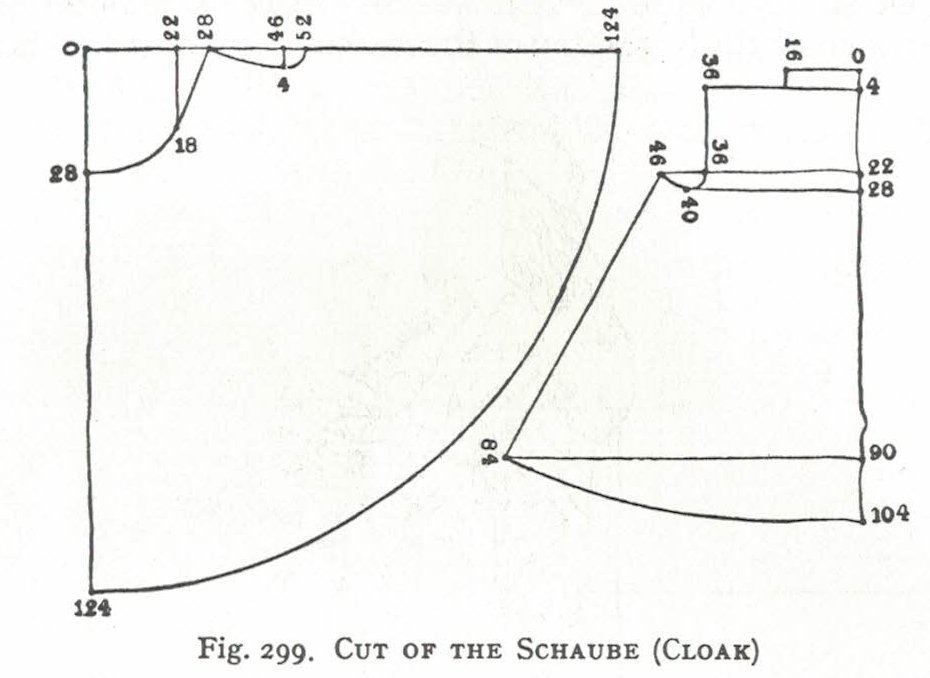
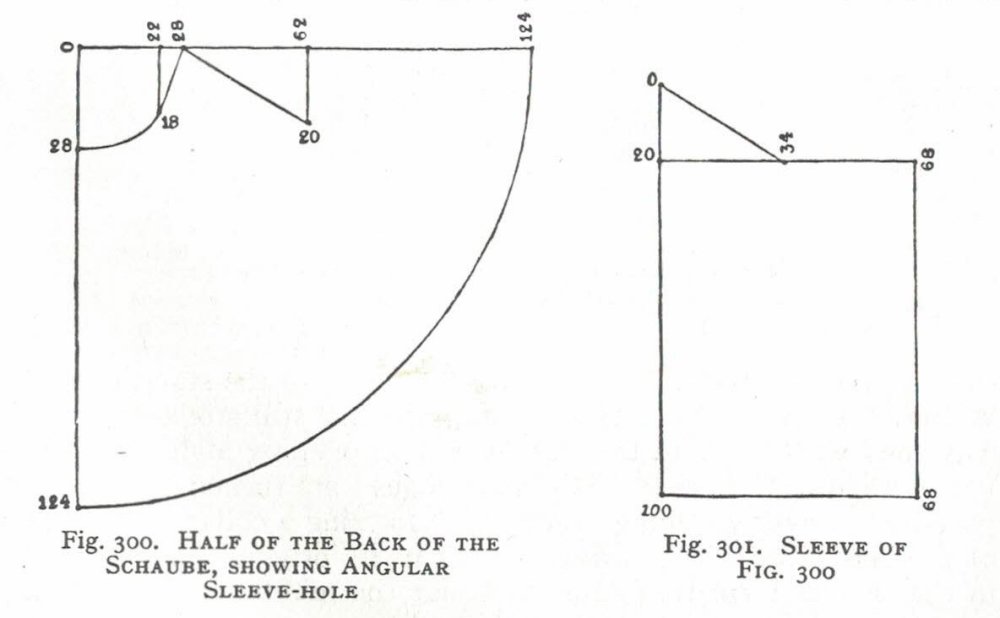
In the end, I used elements from both designs and adjusted things to fit. Once I had a working scale pattern on graph paper, I drew it straight onto the fabric – the garment is such a loose fit, I was confident it would work.
I did not have enough fur to line the whole Schaube, but I wanted it to look as if it was fully lined. I decided to make fur revers down the front and edge the sleeve openings with a narrow strip (called a ‘purfle‘) .
Short on time and funds, I made the rest of the lining in some green cotton I had in stash. I sewed the shoulders and sides, sewed up the sleeves and inserted them.
I cut the fur for the back collar rectangle in one piece, but had to piece the revers. I knew the fur direction had to match, and I could see from the back of the fur that it was pieced with a fine zigzag. I tried that approach to sew the pieces together and it worked well enough, although keeping the hair from the seams was tricky (I now have better techniques for dealing with this).
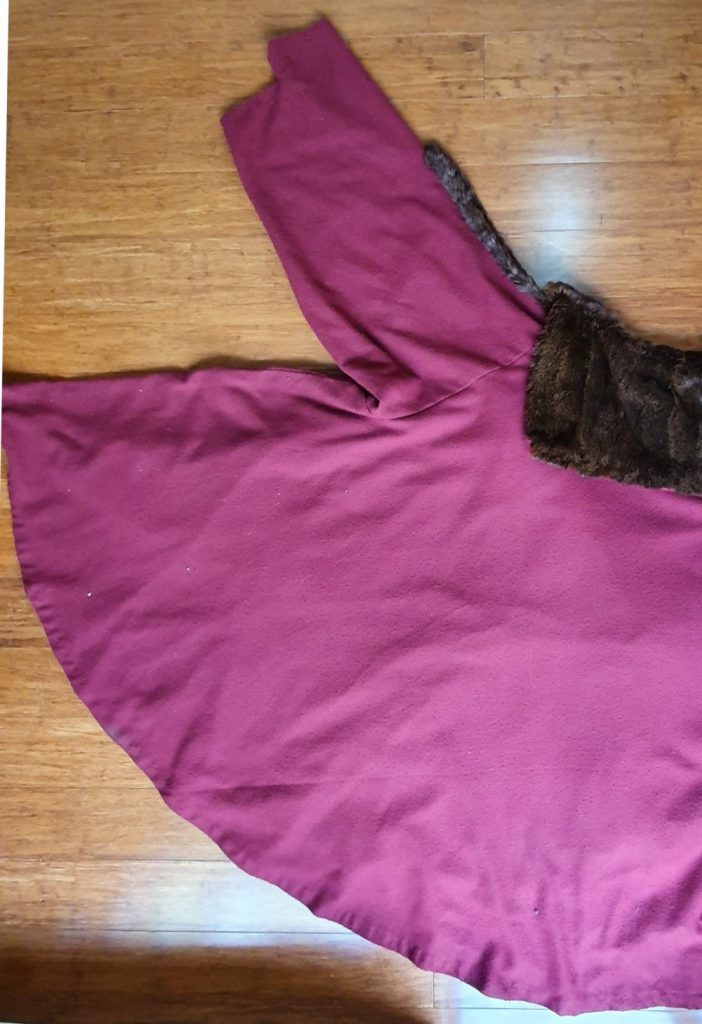

Knowing no better, I bag-lined the back collar with the fur, and sewed the revers and sleeve edges on by hand, straight onto the wool and lining.
My Schaube was lovely and warm and easy to put on. The slits in the arms meant I could stay warm while doing things, with the sleeves hanging back.
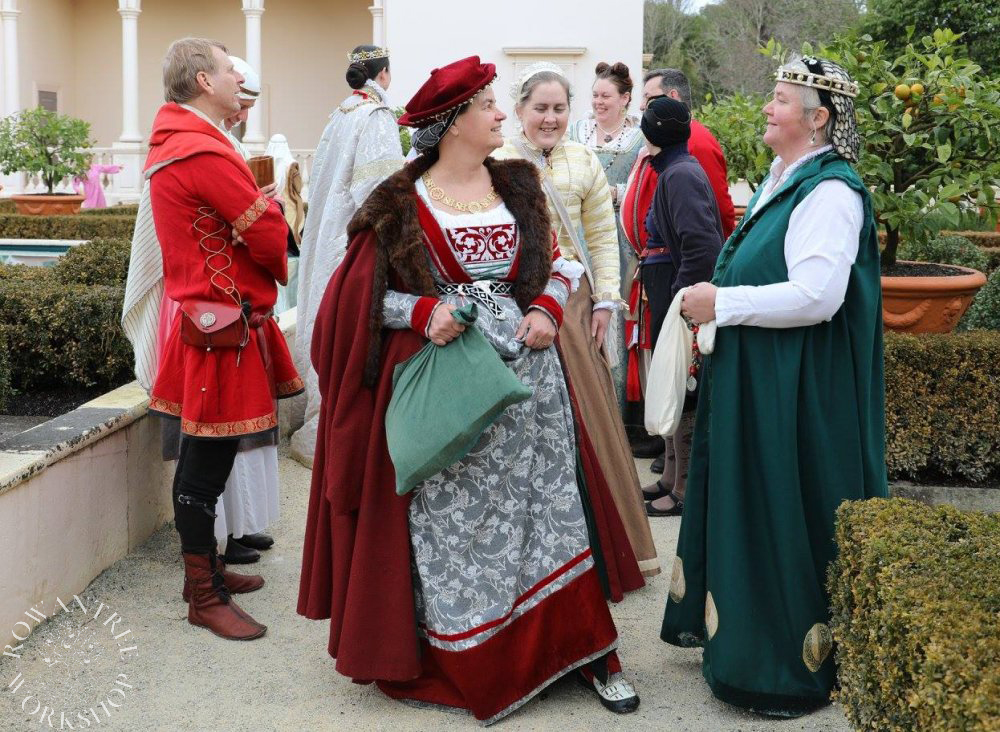

Afterthoughts
Decades later, this Schaube is still a useful garment. The fur is still nice, although the poor quality wool has pilled badly with wear and the hem has dropped. Over the years, I have thought of remaking this several times, but it hasn’t made it to the top of the list yet!
These days, I would use an actual historic pattern – such as the many Schauben in Drei Schnittbücher (Barich & McNealy 2015) – and better quality fabrics.
And these days I know so much more about working with fur – I would finish the fur sections properly, so they could be removed for cleaning.

